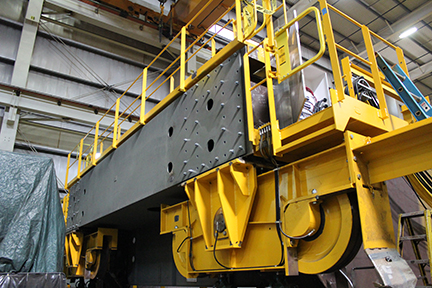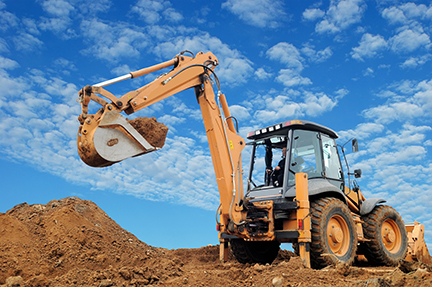Filler Metal Selection and Heat Input Recommendations for Low Alloy Steel
Operations choose low-alloy steels because, compared to carbon steel, they can offer greater strength, toughness and/or performance in demanding service conditions. The mechanical properties of low-alloy steel, however, can vary greatly depending on the alloying elements from which it is made.
As these materials become more widely used in industry — from structural steel and pressure vessel fabrication to heavy equipment manufacturing — the filler metals and welding procedures needed to join them become more critical.
Consider the following to help take the guesswork out of the welding process.
What is low-alloy steel?
Low-alloy steels can contain many different alloying elements. Among these, nickel, molybdenum and chromium typically make up greater than 0.5 percent but less than 5 percent of the total alloying elements.
Each element provides specific characteristics to the material. For example, nickel can improve toughness at low temperatures, in addition to providing modest tensile strength improvement. Molybdenum and chromium improve tensile strength and help to maintain strength at elevated temperatures. Copper can be used in combination with other elements to improve atmospheric corrosion resistance, as is the case with weathering steels.
Most low-alloy steels have tensile strengths exceeding 70 ksi, and some even exceed 120 ksi. Some low-alloy steels have excellent weldability, while others are less forgiving. Keep in mind that typically, as alloy content increases, the material becomes more likely to form brittle microstructures after welding, making it more difficult to weld successfully.
Because each alloying element impacts the weld metal properties and performance, it’s important to properly match the filler metal to the base metal.
Selecting a filler metal
Identifying the specification and grade of the base metal is critical when choosing the right filler metal for a low-alloy steel application; the easiest way to determine minimum requirements is to consult the base material specification. Many ASTM specifications provide both chemical and mechanical property requirements, while many AISI/SAE specifications provide only chemical property requirements, often requiring the specification of minimum mechanical properties at the time of purchase.
Consider the base metal’s chemical composition. The elements used to improve properties for base materials are also used for filler metals. When looking for a filler metal that approximates the base material performance, be aware that the chemical compositions of few low-alloy filler metal classifications align perfectly with base metal compositions. This is due to the significant differences between steel production and the production of weld metal. Since there is rarely an exact match, matching the nominal chemical composition requirements of the application — for example, a required degree of corrosion resistance or performance at elevated temperatures — helps ensure the filler metal and base material have similar properties.
Filler metals can also be matched using the base metal’s mechanical properties. Be aware that some alloys are available in annealed, normalized, or quench and tempered conditions, which can result in significant differences in mechanical properties for the same material depending on how it was processed. Examples are 4130 and 4140 chrome-moly (chromium-molybdenum) steels.
When choosing a filler metal using the mechanical properties of the base material, it’s most common to match tensile strength and/or yield strength, depending on the application requirements. Those fabricating to American Welding Society (AWS) D1.1 or AWS D1.5 can reference AWS D1.1 Tables 3.1 and 4.9, and AWS D1.5 Table 4.1 for filler metal classifications that are considered matching for code-recognized materials.
It’s also common with some high-strength low-alloy steel weldments to undermatch, which means the tensile strength or yield strength of the filler metal is lower than that of the base metal. As weld metal tensile strength increases, ductility tends to decrease. If a component is designed so that stresses are not concentrated in the welds, undermatching can be a way to maximize weld ductility and fatigue life.

of the base material, it’s most common to match tensile strength or yield
strength, depending on the application requirements.
Control the hydrogen
When choosing a filler metal, look for one with a low diffusible hydrogen content. Because low-alloy welds are more likely to develop brittle microstructures, they are more susceptible to hydrogen cracking.
A filler metal with lower diffusible hydrogen reduces one of several sources of hydrogen (others include the base metal and welding environment), thus reducing the risk of hydrogen cracking. Look for a filler metal with an H4 or H8 designator; the lower the number in the designator, the lower the diffusible hydrogen.
Proper storage of low-alloy filler metals can also help minimize hydrogen pickup and subsequent contribution to the weld metal. Avoid dramatic temperature swings for filler metal storage, minimize the total atmospheric exposure time (time out of packaging) and always follow the manufacturer’s storage recommendations.
Utilizing a preheat temperature above 212 degrees Fahrenheit and removing base metal rust, scale or coatings such as oil, grease or scale are other methods to minimize weld metal hydrogen. Used in combination with properly stored low-hydrogen filler metals, these methods can help reduce hydrogen-cracking susceptibility.
Watch the cooling rate
The cooling rate of the weld and the heat-affected zone (HAZ) is important because it influences the formation of microstructures in these areas and their subsequent mechanical properties.
The HAZ is the area near the weld that is not melted by the arc but still experiences changes to its microstructure due to the heat of the process. Because the high hardenability of low-alloy steels makes them more prone to the formation of brittle microstructures in the HAZ, the HAZ properties are an important consideration in successfully welding low-alloy steels.
An excessively fast cooling rate promotes the formation of brittle microstructures, while an excessively slow cooling rate and excessively high heat input can result in very coarse microstructures that may not provide good finished properties. The balancing act of choosing the proper cooling rate is key.
Consider these factors that influence the cooling rate:
Preheat applications and temperature: Establishing and maintaining a minimum preheat temperature helps slow the cooling rate to prevent or minimize the formation of brittle microstructures. To ensure effective preheating, use a sufficient temperature for the material. A material with higher alloy content — and therefore higher hardenability — requires higher preheat temperatures. It’s also important to establish the proper preheat temperature throughout the thickness of the material, rather than simply achieving temperature on the surface. This can be done using induction heating or by heating the material and holding it at temperature one half-hour for every inch of material thickness (example: a 4-inch (102-mm) plate would benefit from being held at the preheat temperature for two hours). Heating a sufficient distance from the weld joint is also key. A good rule of thumb is 3 inches in all directions, though larger weldments may benefit from a greater distance.
Interpass temperature: Setting a maximum interpass temperature is also important to avoid too-slow cooling and to address low-alloy steels that are quench and tempered. Welding “resets” the HAZ microstructure that is carefully created through quench and tempering. Therefore, it’s ideal to minimize the heat-affected zone by regulating interpass temperatures to a limit suggested by the steel manufacturer. In addition, some steels, such as ASTM A514, are susceptible to reheat cracking, a risk that can be increased by excessive interpass temperatures.
Heat input: This is the energy applied to the weldment per unit of length during welding. In North America, heat input is often expressed in kilojoules per inch but may also be expressed as joules per millimeter. Increased heat input slows the cooling rate and produces a coarser grain structure, which has lower tensile strength and toughness. Reduced heat input accelerates the cooling rate and produces a finer grain structure, which has higher tensile strength and toughness to a certain extent. Excessively low heat inputs can negatively affect ductility and toughness.
Pass sequence tips
The pass sequence is another factor that can impact results when welding low-alloy steels. Each weld pass has a HAZ. Wide beads with minimal thickness and depth of penetration help promote additional grain refinement and the formation of finer microstructures throughout the entire cross-section of the weld — a good thing — in previously deposited passes. It’s recommended to use a greater number of thinner, wide passes rather than larger, thicker passes.
Temper bead welding can also be used for extremely high-strength alloys. This technique involves laying down weld beads on top of the completed weld to refine the HAZ and top-layer weld microstructure and provide good toughness, then grinding those beads off, leaving the refined weld metal of the previous layer underneath.
Finish with post-weld heat treatment
Low-alloy steels are more likely to require post-weld heat treatment (PWHT) due to the greater hardness of the materials, which contributes to more weld stresses.
These stresses can be relieved with post-weld heat treatment, but filler metals may respond to the treatment differently than base materials do. It’s important to select a filler metal that maintains sufficient tensile strength and toughness following PWHT.
Consult the filler metal manufacturer to determine a filler metal’s post-weld heat treatment capabilities, particularly if the treatment is performed for an extended time.
In some situations, maintaining the preheat or minimum interpass temperatures after welding — for approximately one hour per inch of base material thickness — is advisable. Informally referred to as a “hydrogen bake-off,” this helps accelerate hydrogen diffusion from the weld metal before service.
In summary
Low-alloy steels harden easier than mild steels, which makes hydrogen and cooling rate control critical when welding these materials. Choosing a filler metal that matches the base material’s properties and using proper preheat and interpass temperatures and heat input during welding all contribute to success.



